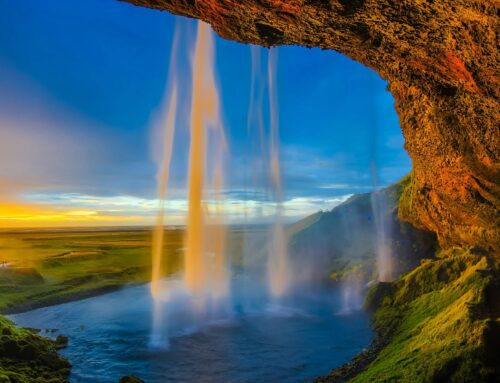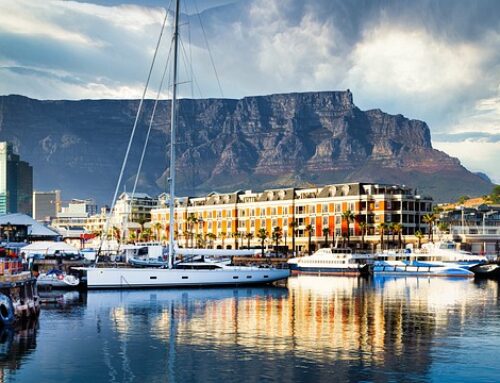The Beautiful Azores, A Trip Report – You Should Go – Really!
The Azores – The Most Beautiful Eco-Friendly Islands That You´ve Never Heard Of
I should have brought along a Thesaurus to even attempt to describe to you how incredibly beautiful the islands of the Azores are.
Clint and I just hopped a short 4 1/2 hour nonstop flight from Boston to the Azores (on Azores Express). After a bit of a layover to fly from the main island of Sao Miguel to the island of Pico, we have arrived half way across the Atlantic Ocean, off the coast of Portugal, to an island that lives as they have for centuries – a pocket of self-sustaining perfection in this crazy world. If you’ve ever sought a place to just make the world go away and immerse yourself in tranquility, beauty, and wholesome living – this is the destination you’ve been dreaming about.
 We are staying at a wonderful hotel property, The Aldeia Da Fonte, which has been lovingly crafted by owners Sonja and Antonio into a charming country estate with hidden gardens, sunny patios and small manor houses that look like they’ve been here for eternity – although the hotel is only 13 years old.
We are staying at a wonderful hotel property, The Aldeia Da Fonte, which has been lovingly crafted by owners Sonja and Antonio into a charming country estate with hidden gardens, sunny patios and small manor houses that look like they’ve been here for eternity – although the hotel is only 13 years old.
I’d like to tell you more, but the sounds of laughter and conversation are drifting up through my window, and I just have to return to the sunny patio and sip a glass of wine with everyone.
Pico, Island of Whales, Wine and Dramatic Ocean Scenery
We’ve been on Pico Island for a few days now and have been completely captivated. There is nothing to do here, and everything at the same time. If you are ‘into’ nature, enjoy short hikes and mingling with locals in tiny village cafes, you would adore Pico. Let me set the scene.


From May until November vacationers and locals alike scamper across the black lava and dive into the shimmering pools. And have I mentioned the flowers??? Everywhere you look are beautiful displays of roadside blooms. I think I’ve seen every summer flower I’ve ever bought for my garden growing wild here – coleus, nasturtium, painted daisy, azaleas, calla lily, impatiens, bird of paradise, and on and on. They are famous for hydrangea that grow along all the roads and fields, but it is too early yet to see them bloom. We’ll settle for miles of shocking pink azaleas in full bloom!
The total effect of being on Pico is one of tranquility and harmony with nature. It’s like stepping through an hour glass to a simpler time. It is clearly evident that Azoreans respect the beauty of their islands and do everything possible to preserve it. They are gracious, welcoming people who love Americans. Most families have relatives who live in Massachusetts and Rhode Island and are anxious to share stories about their family members in the States. Our favorite taxi driver spent 30 years in Gloucester and is now totally living the good life back home in Pico!!!
Faial – Island of Yachts, Windmills and Volcanos
We took a bouncy half hour ferry ride from Pico to the Island of Faial. Horta, the capital of Faial, is a cheery harbor town with a yachting flare. For centuries boats have been provisioning here before making the run across the Atlantic. Today you can see paintings all along the break-front where boaters have left their artistic signatures and highlights of their journey – many on around-the-world adventures. Even though Faial is smaller in size than Pico, the town of Horta is much busier and bustling with shops and colorful local pubs. Raising a glass or two at Peters is almost compulsory!
 The harbor front boasts several 4 star hotels, including a very dramatic Pousada (historic inn) fashioned out of the city fortress – complete with drawbridge and iron gate. A huge open air swimming pool fronts the harbor offering dramatic views while you swim.
The harbor front boasts several 4 star hotels, including a very dramatic Pousada (historic inn) fashioned out of the city fortress – complete with drawbridge and iron gate. A huge open air swimming pool fronts the harbor offering dramatic views while you swim.
Winding around the island in corkscrew fashion is a nicely paved roadway, climbing in circles as it goes. Each progression in elevation reveals stunning views of tidy white villages nestled in valleys – and always, always ocean waves tumbling onto craggy black volcanic shores. Much of this island was settled by Flemish farmers who introduced windmills to grind grain (still standing proud) and began making the now famous cheese of the islands. Interestingly, each island’s cheese production has a slightly different texture and flavor. On Faial the farmer’s fields are divided by hydrangea bushes rather than the volcanic rock walls we saw on Pico. And on all the islands the cows out-number the people.
Again, as on Pico, volcanic activity has shaped the lives of the residents. Today, you can journey up to an impressive caldera (remains of the volcanic peak after it has exploded) and just imagine the fiery spectacle when it blew it’s top. The last great eruption on the island took place just 50 years ago (1957 through 1958) and remains vivid in the collective memory of the island. We journeyed out to the new volcano museum at the far end of the island and were fascinated by the in depth study of the nature of volcanoes and how the earth was formed and continues to evolve. We saw first-hand how the island grew miles of new land out of a sea based eruption, covering the two story lighthouse up to the second story in ash. The museum is now located underground, occupying space that was originally the first story of the lighthouse.
Stories of the families effected on Faial were very poignant. All along the roadsides are abandoned homesteads with their roofs falling in and wildflowers growing on their walls. The inhabitants on the western side of the island could never return home again. In a time when the Azores Islands were barely known to the rest of the world, the United States sent immediate aid in the form of medical help, food and supplies. President Richard Nixon signed a proclamation allowing open immigration by Azoreans to the United States. This act changed the character of the Azores Islands tremendously, as 50% of the population immigrated to the US and Canada – settling predominantly in Massachusetts, Rhode Island and Toronto. The fishermen of the Azores have always felt a close kinship to the New England whalers who visited their waters for generations. During our stay we have met many folks who have family in New England, or who have themselves lived in ‘the States’ for many years and have now returned to the Azores for it’s stress free style of living. It is VERY refreshing to find a European destination where Americans and greeted warmly and enthusiastically!
Sao Miguel – Bustling Cities and Thermal Pools
Ponta Delgada is a study in black and white. Streets and sidewalks are decoratively adorned with intricate mosaic designs executed in small blocks of black basalt rock and white sandstone. Tightly woven streets are lined with white stucco buildings accented with black basalt trim. Numerous city parks were planted with cheery flowers, but alas with the unusually cool weather while we were there, they were yet to ‘pop’, so the city appeared a bit colorless in spots. I am certain that in a week or two all the trees will have leafed out and flowers will provide bright accents making Ponta Delgada a charming seaside city. The city reminded me of the wonderful mosaic displays in Lisbon, and we learned that while Ponta Delgada’s designs are done in black with white accents, Lisbon’s are done in white with black accents. Sao Miguel has the black basalt stone and Lisbon has the white sandstone – so they trade!

Next we were off through rolling green hillsides dotted with grazing cows, to Fire Lake and the simmering thermal pools.
Hiking up to a waterfall reminded me of New Zealand rain forest scenery – large overhanging ferns, a light drizzle falling, sulfur scent in the air, and vegetation in a thousand shades of green. We of course stopped by the bubbling pools of mud to appreciate the volcanic nature of Sao Miguel and then wound our way up the spent volcano for spectacular views of Fire Lake. This is indeed an island serious about the use of eco energy sources, as they employ thermal electric plants, wind farms, kinetic wave plants, and diesel fuel to power the islands. And I would be remiss if I didn’t mention the wonderful Azorean folks we met throughout our journey. Virtually everyone spoke enough English for us to communicate easily. They were gracious, smiling, obviously very hard workers, dedicated to the long standing traditions of the island lifestyle and proud of their Catholic heritage.
Next up – our favorite sites on Sao Miguel!
Furnas and Nordeste – The Best Yet!
 Just when I thought the scenery couldn’t get any better, we ventured off to the eastern expanses of Sao Miguel Island where we were totally wowed! Now let me say we had already experienced 7 days of incredibly beautiful landscapes and were in a bit of panorama overload, but the eastern regions of the island woke up our senses once again and had our jaws dropping at the wild and dramatic coastal views. Everywhere were glimpses of riotous pink azaleas in full bloom cascading down steep headlands. Cows munched precariously on upland pastures – I thought they should have a sign, “Beware of Falling Cows – instead of falling boulders!” What touched me the most was seeing charming little picnic parks tucked all along the winding roadways. Families in the Azores take to the parks every weekend all year long to enjoy family gatherings. Each park has a dramatic scenic view, picnic benches, masonry barbecues, sinks for food prep, toilets, and often playground equipment for the kids – and always a profusion of flowers in bloom – Martha you should see this!!
Just when I thought the scenery couldn’t get any better, we ventured off to the eastern expanses of Sao Miguel Island where we were totally wowed! Now let me say we had already experienced 7 days of incredibly beautiful landscapes and were in a bit of panorama overload, but the eastern regions of the island woke up our senses once again and had our jaws dropping at the wild and dramatic coastal views. Everywhere were glimpses of riotous pink azaleas in full bloom cascading down steep headlands. Cows munched precariously on upland pastures – I thought they should have a sign, “Beware of Falling Cows – instead of falling boulders!” What touched me the most was seeing charming little picnic parks tucked all along the winding roadways. Families in the Azores take to the parks every weekend all year long to enjoy family gatherings. Each park has a dramatic scenic view, picnic benches, masonry barbecues, sinks for food prep, toilets, and often playground equipment for the kids – and always a profusion of flowers in bloom – Martha you should see this!!

OK, so I didn’t quite envision immersing my body in a huge fountain of rust colored water… but what the heck – it was so warm and soothing and maybe I’d come out as a strawberry blond….

The Terra Nostra Garden Hotel, makes a wonderful and relaxing spot to end our trip. 
The hotel is famous for it’s huge thermal swimming pool (yes the bright orange colored one) and the magnificent Botanical Gardens. The gardens go on for miles and have been ingeniously designed to encourage exploration. I go wandering off by myself, and am soon wondering if I’ll ever find my way back to the hotel, but not to worry, there are bubbling streams to follow back to the thermal source. I’m enchanted all along the way as each path reveals a surprise element at it’s end and then invites you to choose one of three additional paths to follow – each with just a tiny glimpse of the floral treat ahead. I found myself smiling with delight, feeling a little like Alice in Wonderland. Put these gardens at the top of your list of must do experiences in the Azores.

Clint, Linda, Jack and I are extremely grateful to the Azores Tourism Board for helping us plan a spectacular trip. I encourage you to put a journey to the Azores on your calendar as soon as possible. The best months to visit are between May and October. The folks at SATA – Azores Express (with offices in Fall River, MA) will have you set up with a great tour in no time. Give Maria a call at 800-762-9995 ( or one of the other helpful agents), and they’ll help you take advantage of the summer promotion – 6nights/7days from Boston to Sao Miguel with air, hotel and breakfast, for as little as $1,179 per person!! The Azores will never be more beautiful than they are today – immerse yourself in athentic natural beauty.









